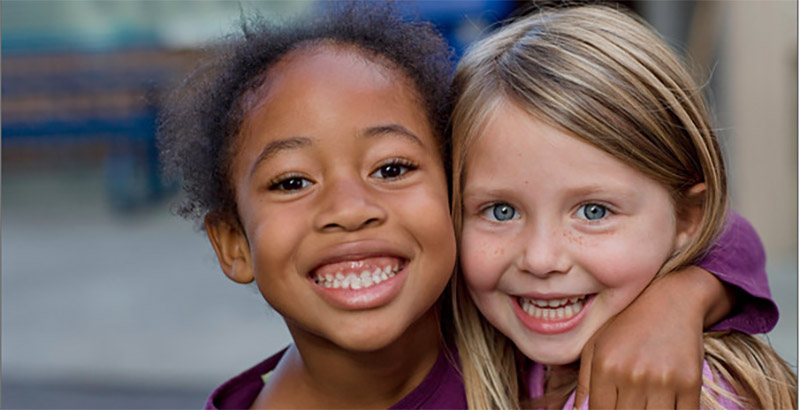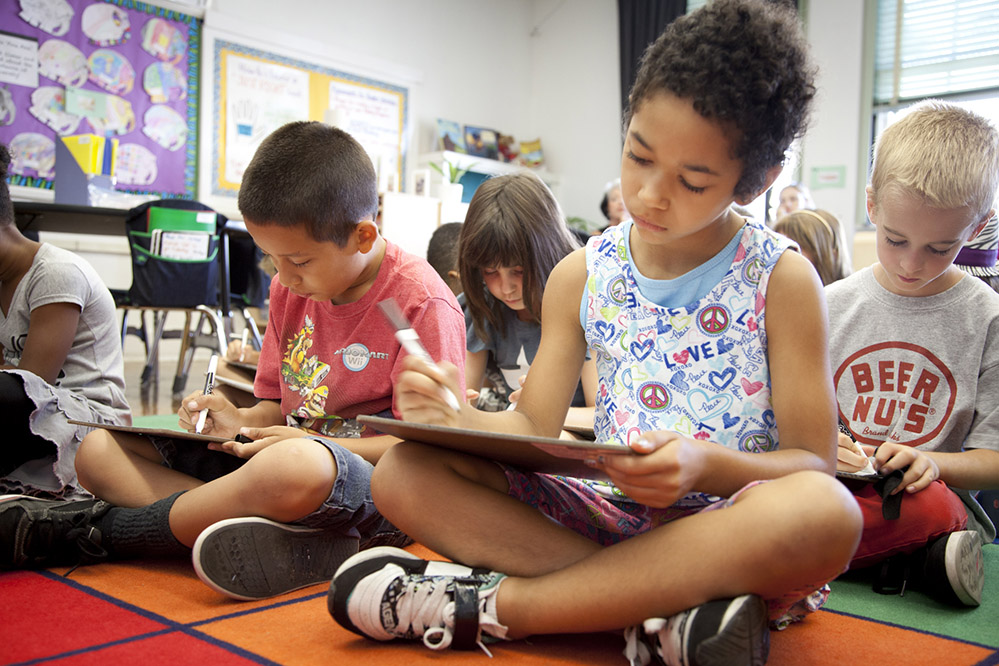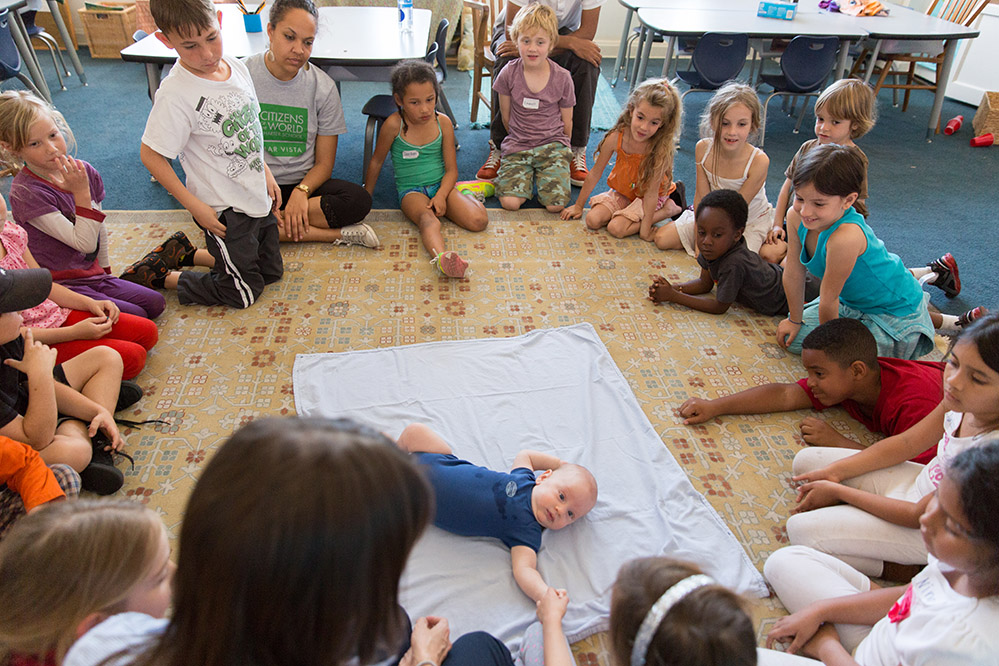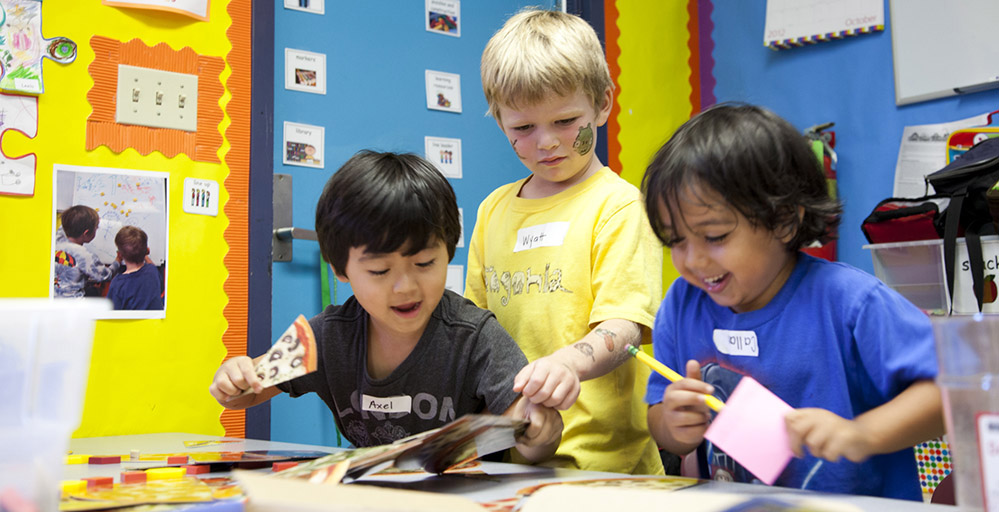Intentionally Diverse Charter Schools: At Citizens of the World, Community Engagement and Students’ Own Backgrounds Are the Foundation for Academic Success

This charter school network is learning through its successes — and challenges — what it takes to create high-performing, intentionally diverse schools in different communities.
Over the past year, researchers from The Century Foundation have analyzed roughly 5,700 charter schools in all 50 states in an attempt to produce the first-ever nationwide inventory of diversity in the public charter school sector. In partnership with the foundation, The 74 released the findings of that report — and today, we are publishing the third of four in-depth profiles of intentionally diverse charter schools, showcasing strategies, policies, and practices that can be replicated and modified by schools elsewhere as they look to pursue diversity as a goal. You can read the first two profiles in the series here and here. This school profile was adapted from The Century Foundation report “Citizens of the World Charter Schools: Balancing Network and Community.”
Based in California, Citizens of the World Charter Schools operates three schools in Los Angeles that demonstrate that high performance and intentional diversity can go hand in hand. Each of the network’s Los Angeles schools outperformed both Los Angeles Unified School District and the state on California’s Common Core–aligned assessments in all subjects, for all subgroups.
Citizens of the World’s expansion beyond Los Angeles has met with mixed success. The network’s first effort, which involved opening two schools in New York City, was problematic. But network leaders learned from that challenging experience and have shown a promising start to their second attempt, in Kansas City, Missouri.
Strategies for Diverse Enrollment
Identifying diverse neighborhoods and setting enrollment goals is the first step in the network’s strategy for creating integrated schools. Each charter application identifies the communities that will be served by a school, looks at the community’s demographics, and sets admissions benchmarks to mirror that diversity. In areas where many white and middle-class families are opting out of district schools, Citizens of the World sets goals to create schools reflective of the local population rather than local school enrollment.
The network then creates robust recruitment plans to attract a diverse pool of applicants. In Los Angeles, efforts focus on disadvantaged students, since wealthier families tend to find out about the school through their own research or social networks. Schools have partnered with youth organizations, health networks, Head Start, churches, the YWCA, and Big Brothers Big Sisters to distribute information to low-income families and families of color. The Kansas City school has a partnership with a local nonprofit, Operation Breakthrough, that provides early childhood education and after-school programs for low-income families.
School leaders track the diversity of the lottery pool throughout the recruitment period to get a sense of where to target additional efforts, looking for geographic variety among applicants to ensure that all corners of the neighborhoods that each school serves are represented. When regulations allow, schools have also asked parents to provide optional information on eligibility for free and reduced-price lunch.
Leveraging Diversity in the Classroom
The network’s commitment to diversity does not stop with enrolling a diverse student body; diversity is woven throughout the network’s educational model, from pedagogy to parent engagement. Its approach to learning is designed to ensure that students have opportunities to interact with diverse peers and with a diverse curriculum. “We don’t think that just by making your population diverse, that inherently leverages the diversity itself,” said CEO and co-founder Kriste Dragon.

Network leaders say that, as a result, their learning model is project-based, culturally relevant, and data-driven. Kindergartners write and illustrate persuasive letters about climate change as part of a unit on ecosystems. First-graders hold a rally to end homelessness, drafting letters to the mayor, creating posters, and writing a song about the issue. Second-graders learn about Cesar Chávez and the farmworkers union through role playing and group decision-making, and those whose home language is Spanish help teachers and classmates with pronunciation and translation of a Spanish song. Third-graders blend social-emotional learning and literacy by pointing out examples of characters showing empathy in the books they are reading. In fourth grade, students learn about the Gold Rush by writing journal entries from different points of view — mine owners, white workers, and the women and people of color who worked alongside them.
Social-emotional learning is also a significant component of Citizens of the World’s educational approach. Lining the walls of CWC Hollywood’s hallways are pictures of the school’s “peacemaking coaches” — older students who serve as peer mediators, leading by example and helping to resolve conflicts among other students. Most classrooms have a “peace corner,” where children can take time to calm down or talk through a problem with a classmate. At CWC Kansas City, a kindergarten math lesson ended with going around the circle and checking in on classmates’ feelings, and at CWC Silver Lake, a kindergarten teacher created a unit on stereotyping after noticing that students were talking a lot about “girls’ games” versus “boys’ games” at recess.
Just as educators track students’ academic progress, they collect data on social-emotional outcomes, although the assessment tools for social-emotional learning are less developed — something leaders hope to improve. Currently, classroom teachers use a social mapping tool that shows friendship networks within a classroom, helping to identify patterns across lines of similarity or difference, provide feedback on which students might need help connecting with peers, and measure the cohesion of a classroom over time. They also complete a survey based on teacher observations of students’ social-emotional skills.

A Bumpy Road to Expansion
The path that led to the first Citizens of the World school began when Dragon started investigating elementary schools for her daughter. Growing up as a mixed-race child in a highly segregated area of Atlanta shaped the way Dragon thought about education — and she wanted something different for her child. When they moved to Hollywood, Dragon found the diverse community she was looking for, but the schools didn’t reflect the neighborhood. “I was really surprised to see schools that were segregated and low-performing,” she recalled.
Dragon joined the board of an intentionally diverse charter school that boasted strong test scores and long waiting lists and ultimately expanded by co-founding a new charter network. Citizens of the World Charter School Hollywood opened in 2010, and over the next three years, the network opened two more elementary schools in other Los Angeles neighborhoods — and it has grown to include middle grades as well. All three Los Angeles schools enroll racially and socioeconomically diverse populations reflecting the neighborhoods they serve.
In 2011, network representatives began meeting with parents in Brooklyn about opening schools in New York. From the start, the network opted for a governance model that emphasized local control. But though the meetings ultimately led to a successful charter application to open two schools in Brooklyn, they also generated community backlash. A parent group sued the State University of New York, the charter authorizer, charging that it ignored community opposition.
The court sided with the authorizer, finding that the network had met the legal requirements for community engagement in its charter application. But when the two schools opened in 2013, they struggled with low enrollment and did not have the socioeconomically and racially diverse student body that network leaders had hoped for. Instructionally, the schools also did not fully implement the network model, in large part because they had trouble hiring teachers and leaders with experience in project-based learning, according to national staff.
Even after community opposition quieted down, the schools never reached the diverse enrollment they had hoped to achieve, and they struggled with transitions in leadership. Test scores were low, and when it looked in 2017 as though their charter might not be renewed, local leaders, with encouragement from the network, decided to withdraw their charter renewal applications, effectively shutting both New York schools at the end of the 2017–18 school year.
What happened in Brooklyn was sobering. “Given our experience in New York, as we looked at the prospect of launching new regions, we were cautious and transparent about what it would take for us to launch a new site,” Dragon reflected.

The same fall that the two New York schools opened, the Midtown Community School Initiative, a group of parents in Kansas City, issued a Request for Proposals to create a new public school to serve the diverse Midtown neighborhood. Citizens of the World applied.
In January 2014, the network received a partnership offer. Parents were eager to get a new school opened — some hoping for a place to send their children when they were ready for kindergarten. But mindful of the challenges and mistakes of the New York expansion, the network insisted on a slow process of community engagement and planning, as well as direct management of the Kansas City operation, rather than local control.
When CWC Kansas City opened in fall 2016, it featured the core elements of the network model, including a project-based learning curriculum, and enrolled a diverse group of students. The initial student body was roughly 46 percent black, 37 percent white, 10 percent Latino, and 56 percent low-income, putting it closely in line with neighborhood demographics.
Conclusion
From expanding to new regions to its work developing better measures of social-emotional learning, Citizens of the World has shown willingness to take risks and experiment. The network has succeeded in creating high-performing, diverse-by-design schools that mirror the diversity of the Los Angeles neighborhoods where they are located, and it is on track to succeed in these ways in Kansas City as well.
The network has made mistakes, particularly with its rapid expansion to New York. However, leaders have learned from these experiences and, through their dedication to ensuring diversity, equity, and inclusion in every aspect of their work, are creating a more authentic process for community engagement in school.
Halley Potter is a senior fellow at The Century Foundation.
Disclosure: The Walton Family Foundation provides financial support to The Century Foundation’s project on charter school diversity and The 74.
Get stories like these delivered straight to your inbox. Sign up for The 74 Newsletter

;)